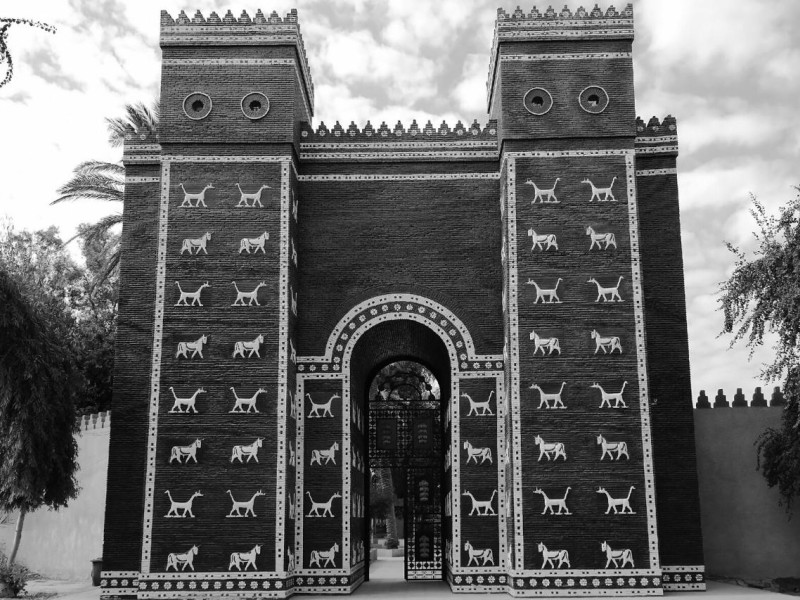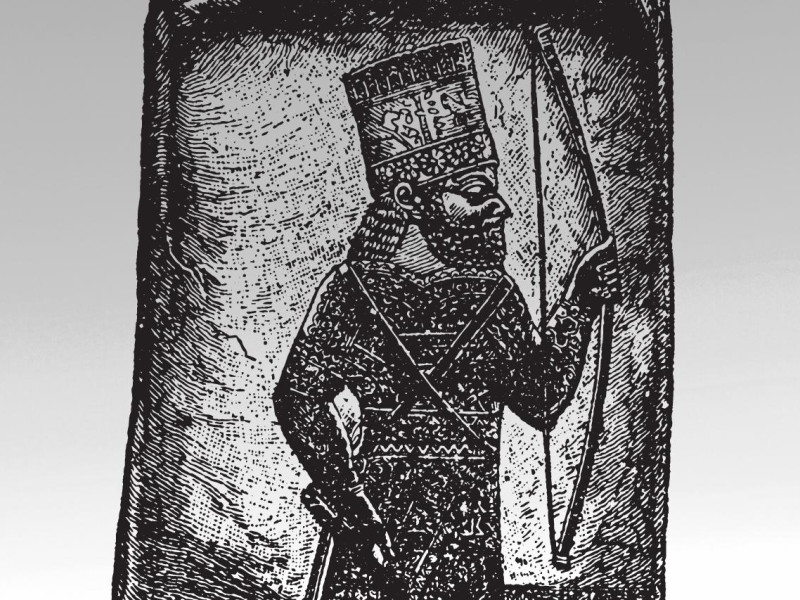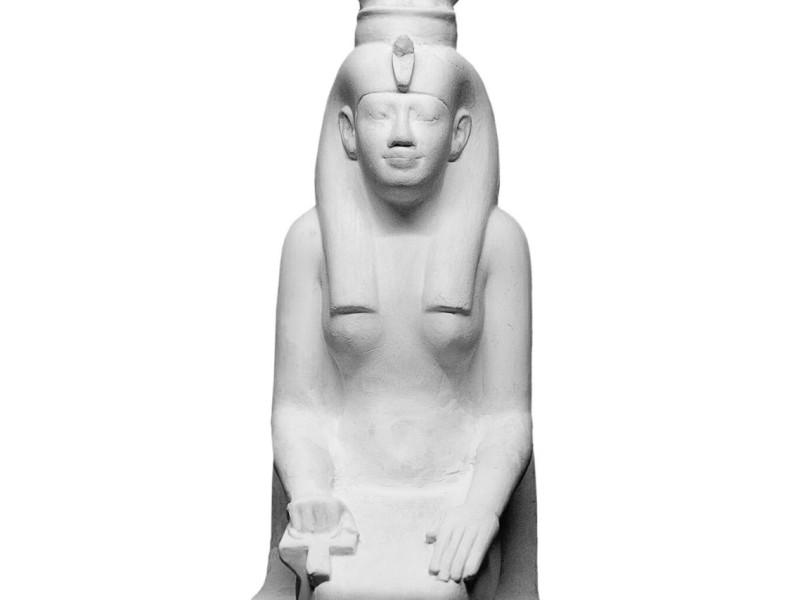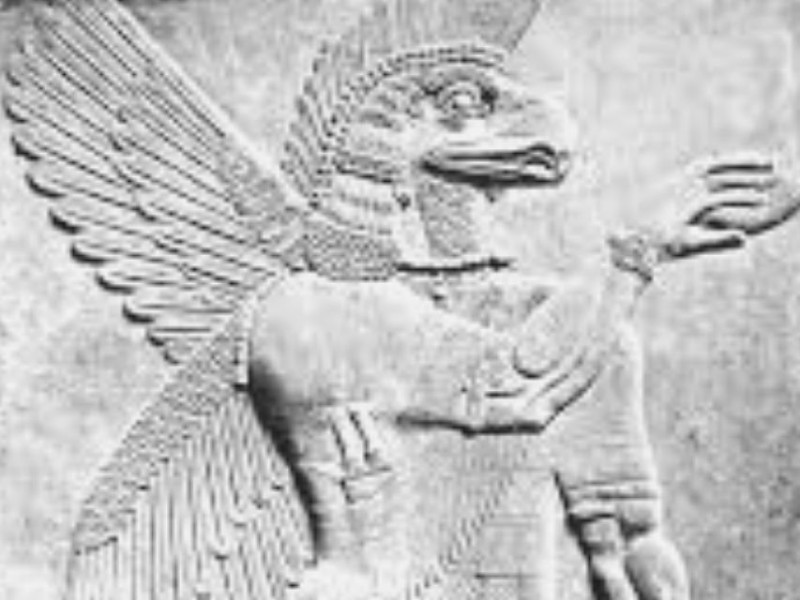Shamash: The Ancient Mesopotamian Sun God of Justice and Morality
Shamash was a sun god who ruled the people of Sumer and was responsible for dispensing justice and enforcing morality. He was part of a triad of gods consisting of his twin sister Inanna and the moon god Nanna.
During the day, Shamash crossed the heavens on a chariot and during the night, he judged the underworld.
Continue reading to discover more about Shamash and how his worship influenced ancient Mesopotamian and Babylonian society.
Who Is Shamash?
Shamash is a major deity of the Mesopotamian pantheon who handed out divine justice. Also known as Utu, he was responsible for the safety of traders and soldiers on military campaigns. According to Mesopotamian tradition, Shamash was the son of Nanna, the god of the moon. His mother was Ningal, the goddess of reeds.
Deity of Power
Shamash was the Sumerian sun god who possessed and embodied the power of light. Thus, he had authority over darkness and nothing could be hidden from him. Ancient Mesopotamians believed that Shamash observed every human activity during the day as he rode his chariot across the sky. During the night, he descended into the underworld and brought justice to souls that were deprived of it.
God of Justice
In Mesopotamian mythology, Shamash was not only a sun god but a god of justice. He is also known to have influenced Hammurabi, a Babylonian king, in drafting the famous Hammurabi’s Code.
The code of Hammurabi governed various aspects of human life and included fines and punishments for offenders. Shamash also oversaw the whole universe and gave life to his followers.
God of Morality
Shamash was a moral god who kept humans and the other gods in check. He was featured in mythologies where the gods misbehaved.
The Mesopotamian sun god had a wife, Aya, and two children and was often associated with Helios, the Greek sun god. His major cults were in Sippar and Larsa, where huge temples were constructed in his honor.
The Family
As we discovered in the preceding paragraph, Shamash had a wife named Aya whose initial name was Sherida. Aya was the goddess of beauty, sex and fertility in Mesopotamian mythology.
As the wife of Shamash, she was thought to embody light, which was the source of her beauty. Sherida’s association with fertility was due to the sun’s role in ensuring plant growth.
Shamash had two children, a son named Misharu and a daughter called Kittu. Kittu was the goddess of truth and ensured that truth prevailed at all times. His son, Misharu, was the god of justice who helped his father in establishing justice. Other mythologies also describe Bunene, the god who drove Shamash’s chariot, as his son.
Other Children
Bunene was also known as the god of Justice, and he had major temples in the cities of Uruk and Sippar. The god of dreams, Sisig, was also named the son of Shamash. Through dreams, Sisig divined the future of his adherents.
Later, the Babylonians associated Shamash and Sherida with the naditu, who were women who dedicated their lives to serving gods. The naditu resided in buildings attached to the temple of Shamash but were adherents of his wife Sherida.
Shamash had an older sibling named Ereshkigal who was the goddess of the underworld. His twin sister was Innana, the goddess of war and beauty. In some myths, Hadad, the god of rain and storm, was said to be Shamash’s brother.
The Roles of Shamash in Ancient Mesopotamian Religion
As was common with ancient religions, Shamash had multiple roles which expressed his nature and character. The Mesopotamians associated Shamash with some of the natural events for which they had no explanation for.
For example, to explain the rising and setting of the sun, the Mesopotamians linked the sun to Shamash through myths. His role in the judgment of the dead was to help maintain morality in society.
The God of the Sun
As already explained, Shamash was linked to the sun in a myth to explain its journey across the sky. According to the myth, two gods opened the gates of heaven at the start of the day to allow Shamash to burst forth. Shamash then started his journey from the east in a chariot driven by the god Bunene. As he made his way through the sky, his light shone and drove away the darkness.
Since the Mesopotamian religion associated darkness with evil, the light given by Shamash was viewed as his victory over evil. The Mesopotamians understood that the light provided by Shamash aided in plant growth so they also associated Shamash with fertility. However, that was not all. The Mesopotamians believed that the light of Shamash went beyond supporting plant growth to piercing the underworld.
Shamash’s light also shone in the human heart and helped mankind to overcome evil. His journey then ended in the West, where he went to rest in the underworld. Later myths narrated that Shamash did not go to rest but went to the underworld to judge the dead. His journey began again the following day.
The Judge of the Underworld
During the dark hours, Shamash descends into the underworld to judge the dead, assisted by Nanna the moon god. The actions of each soul are weighed and if the good deeds supersede the bad ones, the soul would live in happiness. However, if the bad deeds outweigh the good, the soul would live in discontentment.
Generally, the Sumerians believed that life after death was as fruitless as life on earth, so they did not look forward to it. According to them, life in the underworld was just a reflection of the emptiness of life on earth. However, Shamash’s light was believed to penetrate even to the darkest places of the underworld and thus bring hope.
The Sumerians thought of Shamash as a bridge between the world of the living and that of the dead. They viewed death as the continuation of life and regarded the dead as living souls, so they offered lots of food and drink to the dead to sustain them. Every soul is worthy of honor in Sumerian tradition, regardless of Shamash’s judgment.
The God of Life
Though Shamash judged the dead, he was also known to freely give life and grant the requests of his followers. However, he occasionally denied petitions that might inconvenience him. After judging the underworld during the day, Shamash returned to crossing the sky the following morning. As he journeys across the sky, he observes the actions of men.
The Worship
The Mesopotamians worshiped the Sun god Shamash for about 3,000 years. According to the earliest surviving Sumerian records, the people worshiped Shamash as early as 3500 BC. He was worshiped as the ruler of the universe and had temples in the cities of Sippar and Larsa. His worshippers believed he possessed healing powers, and thus appealed to him for healing.
Hymns were sung during rituals to honor him. Scholars view these hymns as some of the finest to have ever come out of the Mesopotamian era. Shamash was also regarded as the god who could wrestle his adherents from the grips of demons. He was worshiped for his goodness and generosity as he was known to give freely.
The Triad Involving Shamash
Shamash, Sin and Ishtar were regarded as a triad of gods and were worshiped as such. The triad symbolized the three predominant forces in ancient Mesopotamia, which were the sun, the moon and the morning star. Shamash embodied the sun, Sin represented the moon, and Ishtar denoted the morning star.
Other mythologies also had the god Hadad instead of Ishtar as the third god completing the triad. The spread of Shamash’s worship overshadowed other local gods. For instance, the god Kettu was originally a local sun god who later became a servant to Shamash. Other sun gods like Ninurta and Negal became certain aspects of the sun while Shamash embodied all aspects of it.
The Symbols
The Shamash symbol was a man with long arms and a beard. Certain drawings depicted Shamash with a crown on his head and sun rays behind him. He held a sword that had saw-like teeth, and it was believed that he used the sword to make way through the mountains as he emerged from the east.
Artwork on cylinder seals showed the scene of Shamash coming out of the doors holding his weapon, which symbolizes his justice. The major symbol of Shamash was a sun disk or solar disc, which was a circle that featured four points simultaneously indicating the four cardinal points. Between each point were lines of waves that emerged from the circle.
The circle symbolized the power of Shamash while the four points indicated his light. The wavy lines also symbolized the warmth that Shamash brought to the world. Other cylinder seal depictions show Shamash being worshiped by his adherents.
Hammurabi and Shamash
King Hammurabi and Shamash shared a very special connection. The famous set of laws known as the Hammurabi Code is said to have been influenced by Shamash. Hammurabi was a Babylonian king who ruled from 1792 BC to 1750 BC. Scholars have been surprised about the impartiality and respect for the rule of law espoused in the Code of Hammurabi.
Experts believe that the Hammurabi Code influenced many ancient legal texts including the Mosaic Law. Other legends narrate that the laws were given to Hammurabi by Shamash. Whether it was through influence or narration, one thing is for certain: Shamash had a hand in setting up the Hammurabi Code.
The Mythology of Shamash
In Sumerian mythology, Shamash rode in a chariot driven by Bunene across the sky each day. He did this with his sister Inanna, the Queen of Heaven. On his journey, Shamash observed the actions of people and enforced justice. He also played an active role in the affairs of humans and came to the rescue of those who were in need.
For instance, in one of the earliest myths, King Etana prayed to Shamash to heal his wife’s barrenness. Shamash intervened by sending Etana to help a dying eagle. Afterwards, the eagle showed Etana where to find a plant that would enable his wife to give birth. Etana then bore a child named Balih.
Other Myths
In another poem, Shamash rescued the husband of his twin sister from demons who were pursuing him. One myth also detailed how Shamash helped Gilgamesh, the hero of the story, to defeat the ogre Huwawa. All these interventions happened during the day.
At night, he journeyed through the underworld judging the dead. While in the realm of the dead, Shamash passes through the sun god’s garden which grows jewels. Shamash judged the dead alongside other gods like Kusu, Malku and the Annunaki.
The Tablet of Shamash
In the 19th Century, archeologists discovered a stele from the time of the Babylonian king Nabu-apla-iddina, who ruled from 888 – 855 BC. The stele was probably an object of worship with religious texts inscribed on it.
The stele also featured inscriptions that praised and worshiped Shamash as Lord. Other parts of the stele also featured historical texts that detailed how the temples of Shamash at Sippar and Ebabbar deteriorated.
According to the stele, the deterioration of the temples was a result of the loss of the statue of Shamash. The stele also detailed how King Nabu-apla-iddina restored the worship of Shamash by constructing a new statue from gold and precious stones. He carved the new statue from the figurine of Shamash which was discovered in the Euphrates.
The tablet of Shamash is presently resting in the British Museum in London.
Summary
So far, we’ve discovered the roles, symbols, family and worship of Shamash. Here is a recap of what we have read above:
Shamash was an ancient Mesopotamian god who later became known as Utu.
He was a sun god who journeyed across the sky during the day in a chariot driven by another god.
Shamash was also the god of light whose presence drove away darkness.
He had a wife named Sherida and two children known as Kittu and Misharu.
His roles included dispensing divine justice and judging the dead during the night.
In Sumerian mythology, Shamash comes to the aid of people who ask for his help.
The stele of Shamash was discovered in the 19th Century and it contains both historical and religious texts.
The stele is on exhibition in the British Museum in London.
Shamash was a popular and powerful deity whose worship influenced other cultures such as the Canaanites and Israelites.













